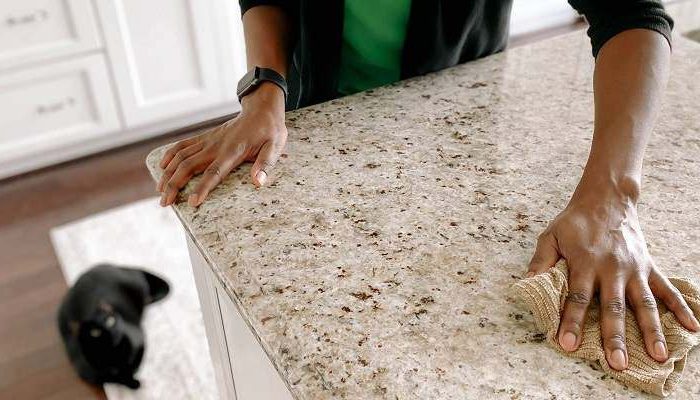One of the most significant choices you have to make when renovating your kitchen is what type of worktop surface you are going to have. Not only do you need to ensure that the colour and style fits with the rest of the design, but more importantly, the decision on the materials your worktop is made from is crucial.
What does not make the choice of worktop any easier is that there are multiple options. As a result, many kitchen refits are delayed because making a final decision on the worktop is too difficult for the customer. Trying to balance the practicalities of a worktop surface, the colour options, and the cost is not easy for everyone.
To ensure that you are not left in the same quandary we have outlined the pros and cons of seven of the most popular worktop surfaces. If you are still unsure, then we strongly recommend you seek advice from a professional kitchen design company such as Kitchen Professionals.
#1 Quartz
Quartz worktops provide a durable and non-porous surface created by blending natural materials with resin.
Pros
- Extremely durable
- Easy to clean
- Antibacterial
- Colour choices are extensive
Cons
- One of the more costly worktop materials
- May discolour if very hot pots, pans, and baking trays are placed on it
#2 Corian
Corian is a man-made composite material made from combining synthetic materials with natural ones. The result is a smooth, glossy worktop surface.
Pros
- Non-porous
- Hygienic
- Is malleable, so can be shaped to suit the kitchen styling
- If damaged, it is repairable
Cons
- Can be an expensive material
- Appearance can diminish, so may need refurbishment
#3 Granite
A natural material that has a proven track record as a heat resistant and durable kitchen worktop.
Pros
- Extremely hardwearing
- Has great visual appeal
- Not usually expensive
Cons
- Porous thus may require resealing in time
- Not usually repairable if damaged
#4 Hardwood
Hardwoods such as beech and oak create a worktop that complements traditional and modern kitchen designs alike and adds texture and warmth to the kitchen.
Pros
- Stunningly beautiful with a huge choice of colours, shades, and wood grains
- One of the cheapest options
- Hardwoods are normally antibacterial
- Will age, which adds to its aesthetic appeal
- Can be repaired
Cons
- It Will require regular maintenance to retain its appearance
- Will require oiling twice per year
- Can mark, scratch and scorch
#5 Stainless Steel
Found most often in commercial kitchens, it is also a popular choice in contemporary domestic kitchen designs where a hard-wearing worktop is required.
Pros
- Modern appearance
- Very easy to clean
- Durable and hard-wearing
- Resists liquids
- Can be shaped and formed to suit design
Cons
- Prone to marks, scorches, and scratches
- Can appear lifeless and cold
#6 Laminates
The #1 choice for kitchen worktops due to their versatility and low cost.
Pros
- Easy to clean and maintain
- Hard-wearing
- Heat resistant
- Lots of colour and design choices
- Low cost
Cons
- Can melt or have burn marks
- Scratches can attract bacteria
- Surface can peel
- Interior at risk if water ingresses
#7 Denton
A newer worktop surface that is made from a combination of materials you would find in porcelain, glass, and quartz to create a hard-wearing surface.
Pros
- Extremely resistant to scratching and staining
- Will resist heat
- Large selection of colours to choose from
Cons
- Its hardness makes it prone to chips and cracks
- Rarely repairable
- Very expensive

